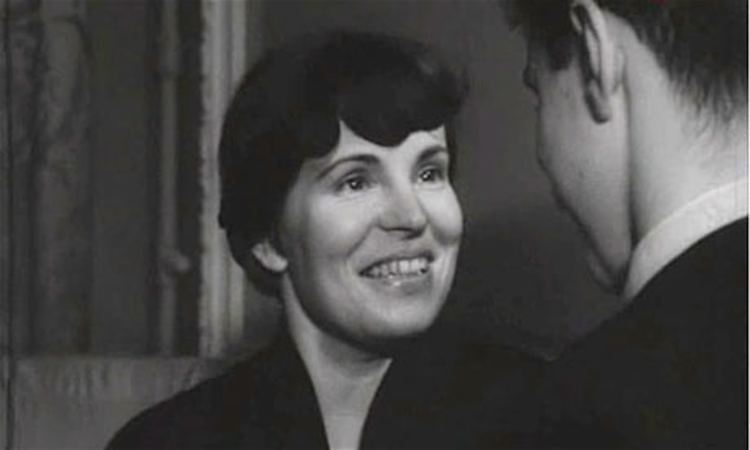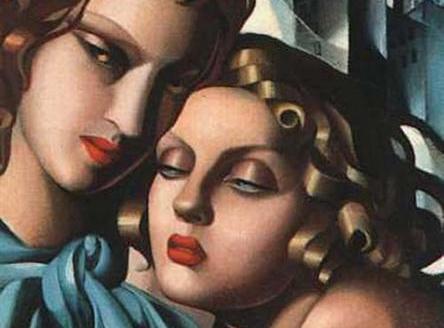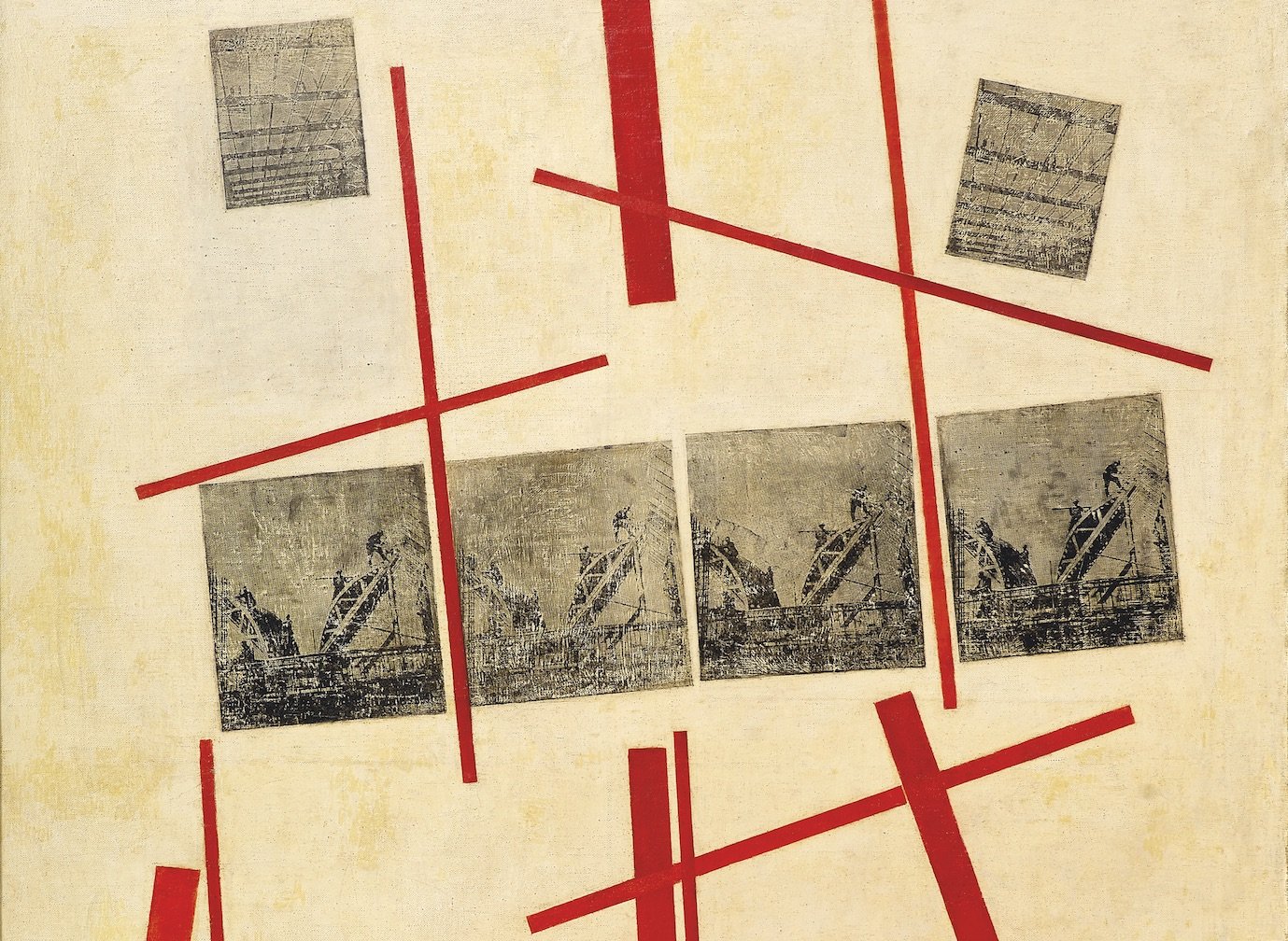Elemental, ascetic, uncompromising: a listener’s guide to Russian composer Galina Ustvolskaya

We look at the work of Soviet composer Galina Ustvolskaya, born on this day in 1909, who is only now starting to be recognised as a pioneer of 20th century music.
She was dubbed “the lady with the hammer” for the radically percussive nature of her music. But the life and work of composer Galina Ustvolskaya has left only the lightest imprint in the mainstream of classical music. Born in 1919 Petrograd (now St Petersburg), Ustvolskaya began her fractured composing career as official strictures on Soviet music reached their most oppressive. Her graduation from Leningrad Conservatoire in 1947, where she studied composition under the celebrated composer Dmitri Shostakovich, coincided with the dawn of propagandist-in-chief Andrei Zhdanov’s era of cultural purges which called for even stricter control over the arts.
Ustvolskaya was neither dissident nor conformist, but like many artists working during Stalin’s rule, an uncomfortable combination of the two. She wrote music commissioned by the state — film music on Soviet themes and suites for Pioneers music which she later disavowed — and in parallel, privately worked on the percussive, modernist compositions that define her oeuvre. The result is a modest discography of visceral immediacy, breaking through to the less tonal and more aggressive forms of music that mark Ustvolskaya as a pioneer of the 20th century.
Life and work
Ustvolskaya’s earliest acknowledged work is the Concerto for Piano, String Orchestra, and Timpani (1946). It is dramatic music with a persistent intensity, pushing against the limits of our ears in all directions. Indeed, to listen to Ustvolskaya’s orchestrated music is to become accustomed to such sensations.
Ustvolskaya’s 21 published pieces of music perhaps doesn’t mark a prolific output, but it was enough to establish a markedly defined style. Violent extremes in dynamics appear from the start, and they remain until the end of Ustvolskaya’s composing life, becoming a trademark of her musical expression even as she later began to introduce sacred texts into her works; the composer returning to religion in a context in which there was none.
The 1940s were a fruitful creative period for Ustvolskaya, but one that also conversely blighted her career and legacy. Many of her most famous smaller-scale works from this period — 12 Preludes for Piano (1953), the Grand Duet for Cello and Piano (1959), and five symphonies (1970-75) — took over two decades to receive their first public performance, a devastating length of time for composers whose continued work and renown rely on performances swiftly following finished manuscripts. The first of her six piano sonatas had to wait 27 years for its first public hearing, an event perhaps due as much to the composer’s reticence as the discomfort her subversive music caused the authorities. The delay doubtlessly handicapped Ustvolskaya’s popularity, but it is also likely to have discouraged her from writing. Why compose music when nobody’s listening? That Ustvolskaya would regularly refuse invitations to premieres of her own music likely didn’t help matters, and only added to her reputation as a recluse.
It was only with the 1968 premiere of Duet for Violin and Piano (1964) that the dates of performance began to catch up with the dates of composition. Ustvolskaya’s last work was completed in 1990, after which she stopped composing. She lived a private life in her St Petersburg apartment, and passed away aged 92 in 2006.
Style and defining features
Ustvolkskaya’s early composing years began as formalism — a style that privileged form and technique over clarity of expression — officially became the greatest offence for Soviet composers tasked with producing pieces for the proletariat. She entered Leningrad Conservatoire in 1937, a year after Shostakovich’s opera, the Lady Macbeth of Mtsensk, was officially denounced as “formalist”. But despite the strictures around acceptable musical style of the time, it is rare to detect the bombastic, revolutionary optimism which the Soviets demanded in music.
Although Ustvolskaya ascribed classical terms to her works — sonata, concerto, symphony — they bear no semblance to the traditional forms of their namesakes. The most consistent and recognisable aspect of Ustvolskaya’s style is her oscillation between the extreme clamour of ffff and the near inaudible pppp. To execute this in her works for piano, where this contrast can often be found, demands an impeccably controlled and capacious technique. Bar lines are a rare feature in the scores, unmooring her music yet further from the conventions of classical composition. It is not uncommon when looking at her piano scores to see groups of notes suspended from lines bunched together above the stave; a marionette of black discs.
Ustvolskaya’s style is her oscillation between the extreme clamour of ffff and the near inaudible pppp
To expect the easy satisfaction of gentle harmonies in Ustvolskaya’s work is a fool’s endeavour. Your ear searches in vain for pleasing musical moments, but it is only on dogged repetition that you can rely. After the initial creative burst of the 1940s, Ustvolskaya’s style evolved, and the 50s saw her shed the remaining elements of Shotakovich’s musical influence from her work. By the time she was writing Compositions I, II, and III in the 1970s, the lyricism of her earlier work had vanished, superceded by the bleak soundscapes of unbending instrumental form: blocks of sounds that are loud, repetitive, and without any discernible harmony.
It was in these years that Ustvolskaya began introducing voice and religious texts into her works, a sign that her creative outlook had shifted, turning the monumental in the direction of the heavens.
In focus: Trio for Clarinet, Violin, and Piano
Although the trio waited 19 years for its premiere in 1968, it has since become one of Ustvolskaya’s most performed pieces. Composed early in her career, the Trio for Clarinet, Violin, and Piano (1949) begins with the air of lugubrious resignation in a clarinet solo both doleful and lyrical. But this is only a veneer for the anarchistic pulse of music that soon emerges. Ustvolskaya may have internalised the lyrical instinct of Shostakovian compositions in this early work, but there is also a forthright rejection of the romanticism which her composition teacher could not eschew.
If composers of the early 20th century like Stravinsky and Shostakovich produced new music by redrawing neo-classical and romantic musical harmonies and the tunes that sang above them, then Ustvolskaya sought to rethink the very need to rely on such harmonies and tunes at all. In this trio, we hear the beginning of what must surely be one of Ustvolsksya’s greatest feats: the de-aestheticisation of music.
The polyphony between the three instruments at the start of the trio, as they pass the main themes between them, speaks to the more traditional aspect of Ustvolskaya’s early music. But this is not sustained: as the music moves evenly towards the coda of the finale, conversation between the instruments falls away to be replaced by repeated piano strokes, a battering ram of nihilism that presages the more aggressive percussive style of her music that was to come.
Ustvolskaya: the anti-muse
“It is not you who are influenced by me; rather it is I who am influenced by you,” Shostakovich once told Ustvolskaya. The two composers shared a deep and collegiate relationship, but Ustvolskaya, a guarded and reclusive personality, bristled at the suggestion that she was a muse to Shostakovich. In the last 15 years of her life, she denied his influence on her music as well as their personal relationships, eventually destroying all of his letters to her. (Ustvolskaya refused point blank to contribute memories to Elizabeth Wilson’s definitive biography Shostakovich: A Life Remembered)
That Ustvolskaya shaped Shostakovich’s compositions is well-documented — he was known to often show his manuscripts to Ustvolskaya for her approval — but it’s the “Ustvolskaya” quotation that’s suggestive of a more profound creative influence.
Shostakovich so admired Ustvolskaya’s Trio for Clarinet, Violin, and Piano that he quoted it in his Fifth String Quartet (1952), a work whose premiere he strategically delayed until after the death of Stalin. The theme is inserted in the last movement of the quartet and appears as a kind tonic to the wrought conflict that precedes it.
It could be that the insertion of this theme was a kind of artistic endorsement from former teacher to student; but equally it could have been a lesson in concealment, an art which provided artistic salvation to Shostakovich and which the composer had refined to the most subtle expression. An additional layer of intrigue is introduced when Shostakovich, 25 years later, inserts the quotation again, in his 1974 Suite on Verses of Michelangelo.
The dynamics of the artist and the muse are traditionally unidirectional, rendering the muse as a passive figure who inspires simply by being. But here it would be more accurate, and certainly more empowering, to recognise inspiration as the result of the muse’s own creative work. Without Ustvolskaya the composer, not just Ustvolskaya the woman, Shostakovich’s Fifth Quartet would have been a different, arguably poorer piece of music.
A beginner’s playlist
Twelve Preludes for Piano (1953)
Ustvolskaya wrote these miniature-like pieces during the first phase of her composing life. It’s a rewarding experience to listen to them as though they each offer one opinion expressed through quasi-Bachian lines of counterpoint.
Grand Duet for Cello and Piano (1959)
A little convention in an otherwise unconventional oeuvre. The energetic Grand Duet for cello and piano has five movements and marks the finish line for Ustvolskaya’s first period of composing. There is melody here in the first movement, and a total absence of it in the second, heightening the unease of listeners as they dive further into the duet.
Composition I: Dona Nobis Pacem, for piccolo, tuba and piano (1971)
Today, composition students are often taught to reserve the lowest note for only the most special moment in the music. In the first of Ustvolskaya’s remarkable Three Compositions, the very first note you encounter rudely emerges from the bowels of the tuba. The piece is not lighthearted, but there’s a certain humour in the extreme chasm between the grumbling of the beginning notes, and the high register of the piccolo that follows.
This article is part of our series Women, recollected, an ongoing project shining a light on the forgotten women pioneers of 20th century culture.


